Assuming you have already learned the basic rules of chess, the next major step towards developing your game is understanding the moves and principles behind popular chess openings. And while each side generally follows similar opening principles and strategies, there are specific aspects to choosing and playing chess openings for White.
There is no doubt that studying the best checkmate moves is a lot of fun, and solving tactical puzzles in the middle game often involves finding hidden checkmates and other combinations. But the reality is that you first need to develop your pieces into a solid middle game before you can hope to consistently win. The core principles behind proper chess openings for White are:
- Develop your pieces
- Control the center of the board
- Protect your king
But knowing those concepts, in theory, is a lot different than being able to quickly move through the chess openings for White without making a tactical error that could cost you the game moments after it started.
Especially in a timed game, being able to make the first five or ten moves without calculating is a huge advantage, and it leaves you with more time in the middle and end game when it counts.
So if you are ready to learn some of the best chess openings for White and the principles behind them, keep reading to learn everything!
-> Elevate your chess game with a new set! Order now by clicking here.
Skip Ahead To:
If you want to quickly jump to a specific White chess opening, click through to the following sections:
You might also like: Learn Chess Online With Chess Grandmaster
Common Questions About Chess Openings for White
Before diving into the details of the various White chess openings, let’s answer some of the most frequently asked questions on this topic.
What is the best opening for White according to Stockfish?
According to Stockfish, the best opening for White is to move your Knight to g3.
How many openings are there for White?
Possible chess moves increase exponentially as the game progresses, but in the beginning, White has 20 possible moves.
Is Ruy Lopez a good opening for White?
The Ruy Lopez is one of the most popular and reputable openings for White.
You might also like: Chess Openings: Chess Strategy for Beginners
Warning: Undefined array key "title" in /home/amphyblogdev/domains/amphy-blog-dev.adcore.com/public_html/wp-content/themes/sentrysite-corporate/inc/courses-wi.php on line 29
You first need to develop your pieces into a solid middle game before you can hope to consistently win
Best Chess Openings for White
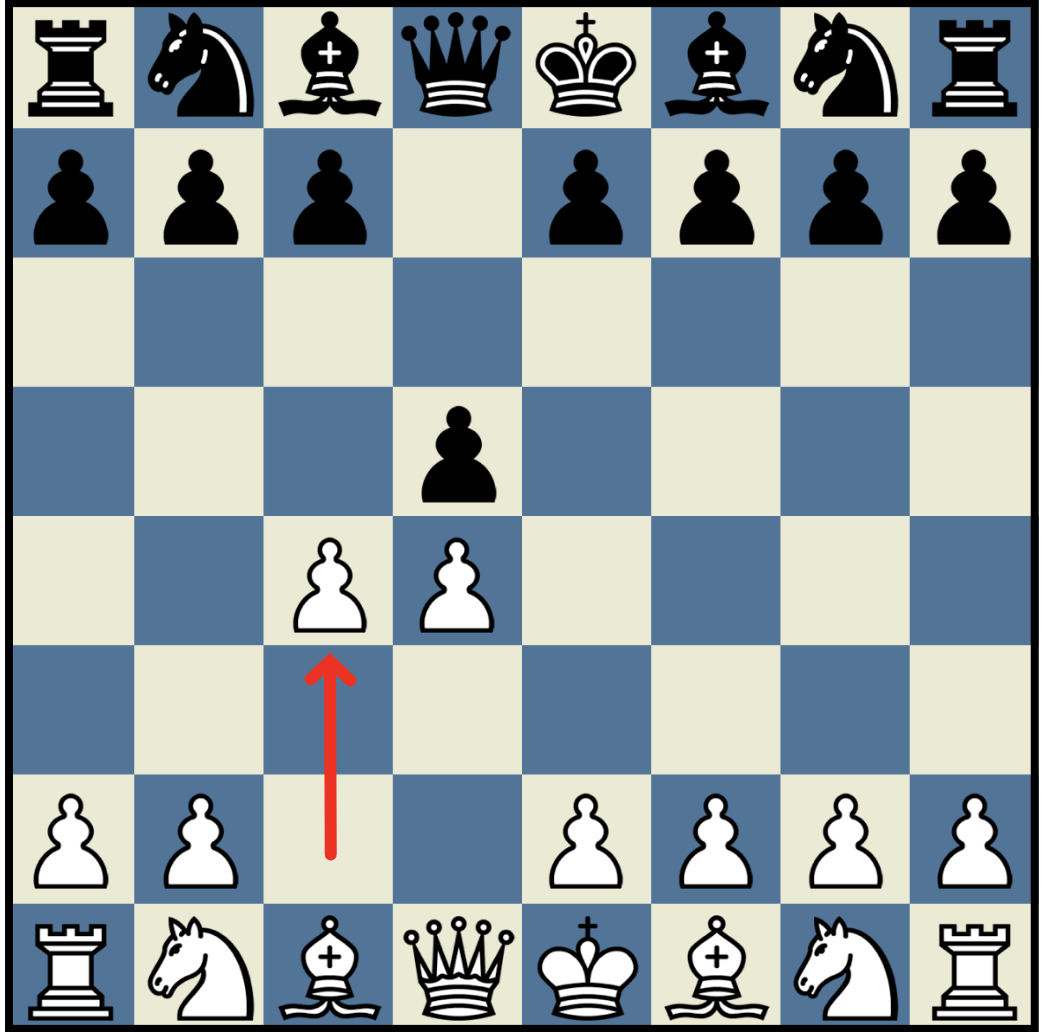
Credit: Simplify Chess
Whether you are more of a tactical or a positional player, consider adding the following openings to your repertoire for White.
1. Queen’s Gambit
The Queen’s Gambit is one of the most popular openings for White and begins with the following moves:
- d4 d5
- c4
As you can tell, this move leaves the c4 pawn seemingly vulnerable, but Black cannot take that pawn for free, as White will later win a pawn back while having better central control.

Credit: Chess.com
2. The King’s Gambit
The King’s Gambit is the mirror of the Queen’s Gambit, sacrificing the kingside pawn for better central control. The first moves are:
- e4 e5
- f4
From that point, Black can decide to accept or decline, and further study will give you lots of tactics for White.
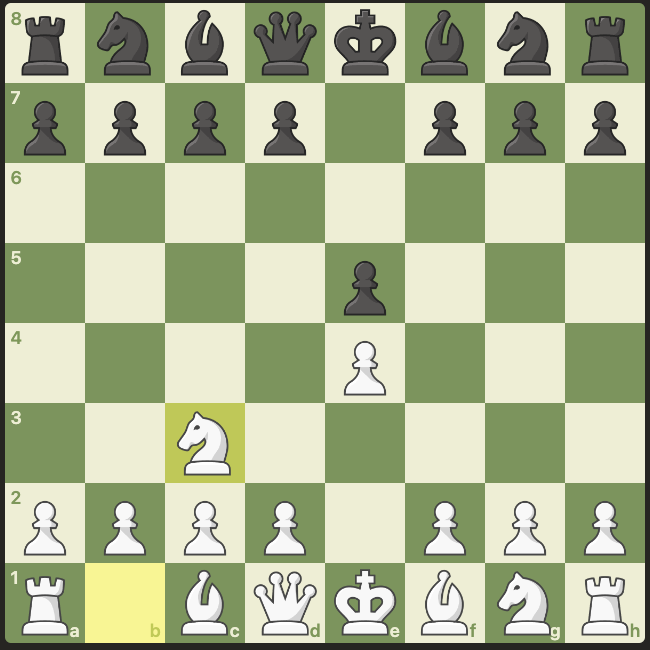
Credit: Chess.com
3. Vienna Game
The Vienna Game is a slightly aggressive opening for White that begins with the following:
- e4 e5
- Nc3
Variations exist from there, but the key is the Knight on c3 having fantastic control of the center.

Credit: Chess.com
4. Ruy Lopez
This opening, named after a Spanish priest, puts pressure on Black with the following moves:
- e4 e5
- Nf3 Nc6
- Bb5
The idea is to put pressure on the Black c6-knight to limit their pawn development.
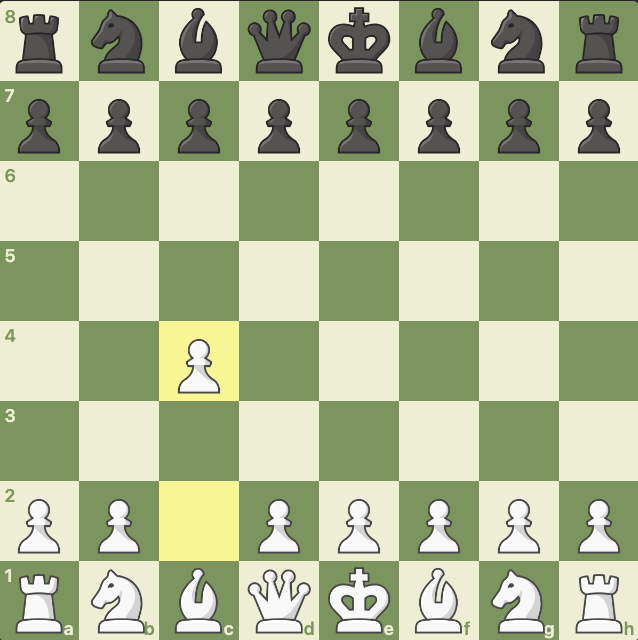
Credit: Chess.com
5. English Opening
Many White openings begin with moving a pawn to e4 or d4, but the English opening features a pawn to c4 as the first move. The strategy here is to have a flexible approach that throws off many of Black’s standard opening sequences.
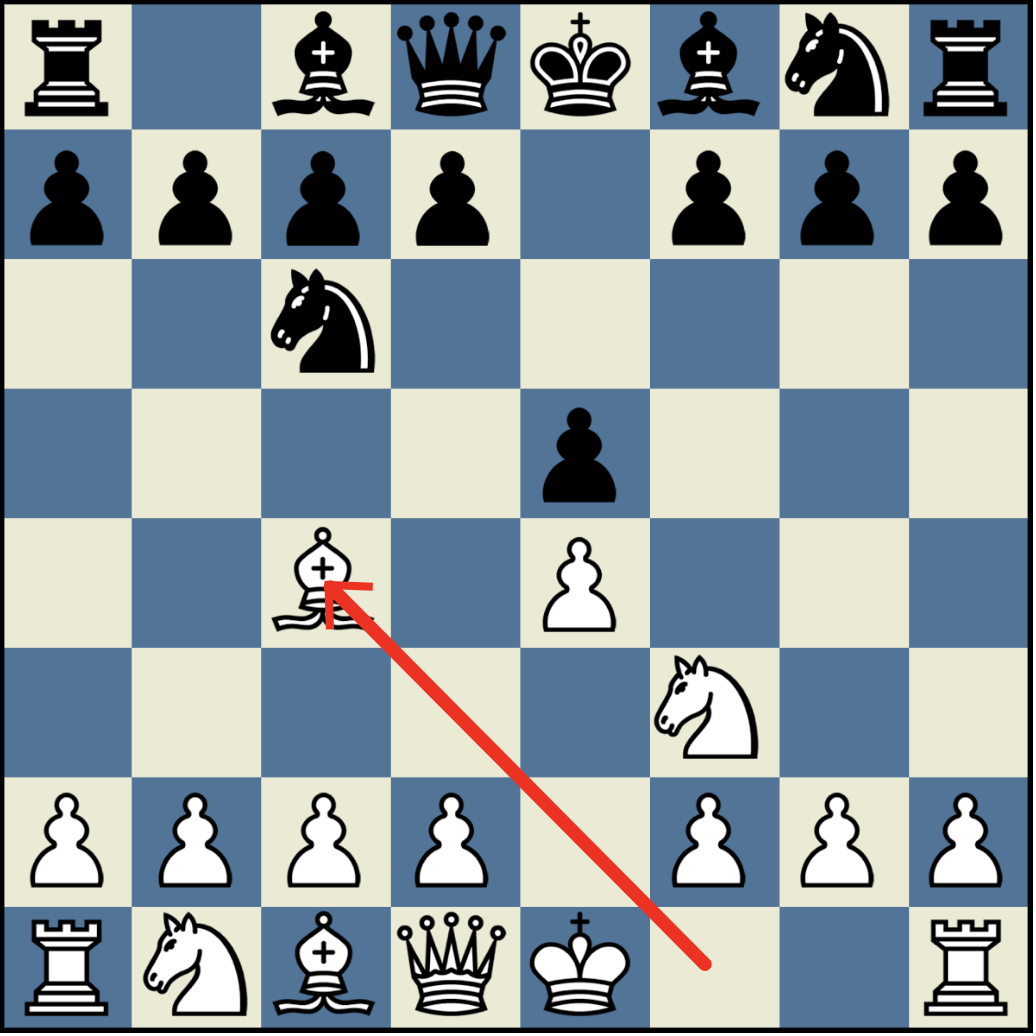
Credit: Simplify Chess
6. The Italian Game
The Italian Game is an opening that syncs up with the opening principles you read above, and it starts with:
- e4 e5
- Nf3 Nc6
- Bc4
The strategy of this sequence is to continue putting pressure on Black’s weak f7 square.
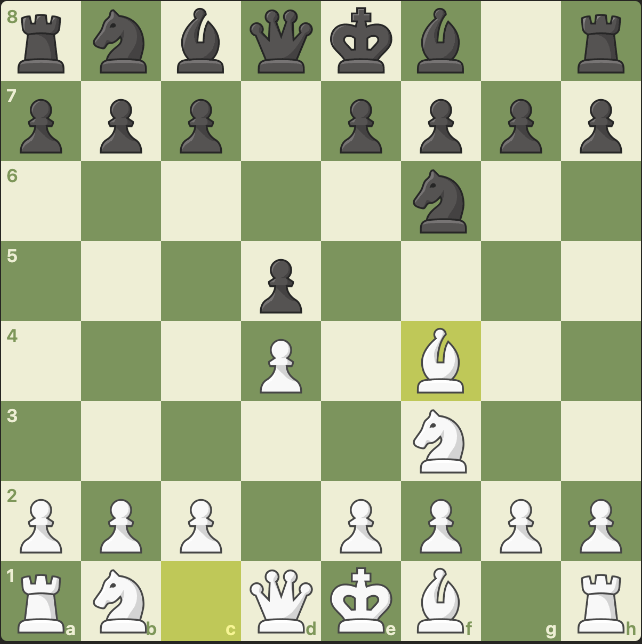
Credit: Chess.com
7. London Opening
The point of the London opening is to develop the dark-squared bishop right away:
- d4 d5
- Nf3 Nf6
- Bf4
This opening gives White strong control over the e5 square. It’s a notoriously solid opening favored among beginners but also used to great effect at the highest levels.
8. The Fried Liver
The Fried Liver opening is a way to transpose the Italian Game into a more aggressive attack for White that has the potential to end the game quickly:
- e4 e5
- Nf3 Nc6
- Bc4 Nf6
- Ng5
The last knight move for White puts pressure on Black’s weak f7 square.
9. Bird’s Opening
If you want a weird opening that will confuse your opponent, consider the Bird’s Opening move of pawn to f4. While not ideal for beginners, it can give you an edge over unprepared players.
10. Smith-Morra Gambit
The standard opening for a Smith-Morra Gambit is:
- e4 c5
- d4 cxd4
- c3
With careful study of the variations in this opening, you can put aggressive pressure on Black and confuse amateur players.
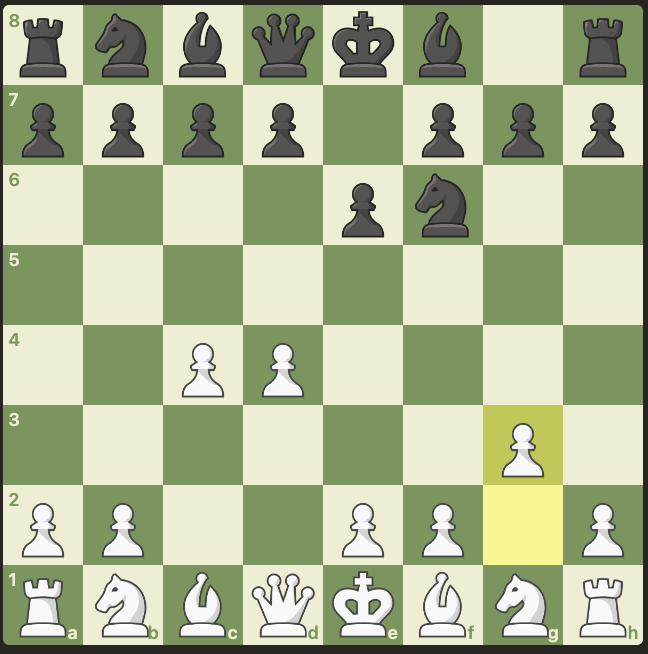
Credit: Chess.com
11. Catalan Opening
Catalan is a solid, positional opening for White that can be transposed to from various move orders, but is most commonly reached with the following opening line:
- d4 Nf6
- c4 e6
- g3
Combining the d4 and c4 pawns with the kingside fianchetto, White aims to apply long-term pressure on the centure and Black’s queenside.
12. Alapin Variation Opening
This strategy is a fantastic way to prevent Black from attempting a Sicilian defense, and begins with the following:
- e4 c5
c3
Here, White makes it harder for Black to control the center.

Credit: Chess.com
13. Reti Opening
Named after Richard Reti, this hypermodern opening starts with Nf3. It’s very flexible, as White has multiple options with his central pawns. Moreover, it can transpose to a d4 or a c4 opening, such as the aforementioned English opening.

Credit: Chess.com
14. Four Knights Game
As the name implies, the standard line for this opening involves all four Knights coming into play early:
- e4 e5
- Nf3 Nc6
- Nc3 Nf6
This symmetrical position gives White the chess tempo to launch an attack first.

Credit: Chess.com
15. Trompowsky Attack
This opening breaks some principles for White, but it puts pressure on Black immediately by developing a bishop:
- d4 Nf6
- Bg5
This attack helps White maintain the game tempo.
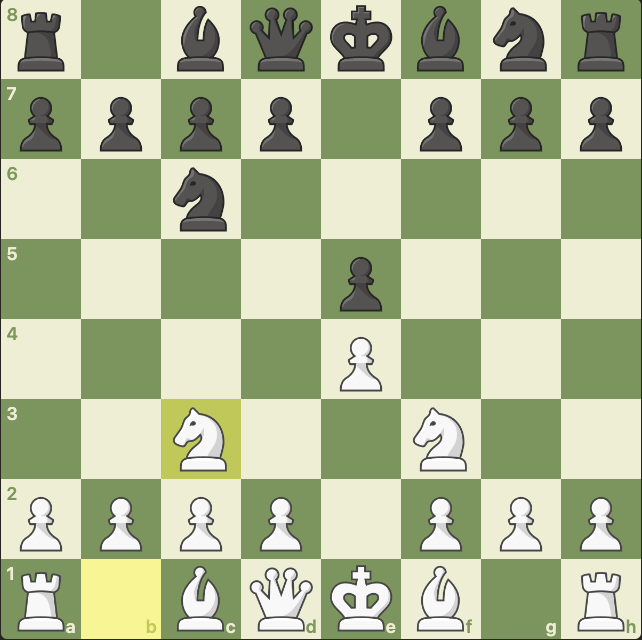
16. Three Knights Opening
This opening resembles the Four Knights Game, except Black moves a bishop instead of the last knight:
- e4 e5
- Nf3 Nc6
- Nc3 Bc5
This opening can easily transpose into a line from the Four Knight Game.
Final Thoughts
There’s a lot of theory and nuance to chess openings, and they tend to follow more significant themes that will put you in better positions for middle and end-game scenarios. Hopefully, you will now feel much more confident in choosing a chess opening for White in your next game!
Related Articles
Check out some of these related articles that will further develop your chess game:
Top Chess Courses
Meet Amphy
The largest marketplace for live
classes, connecting and enriching
humanity through knowledge.
Related Articles

